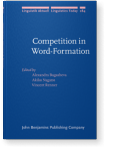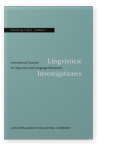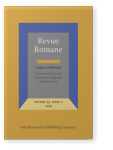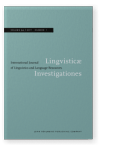Richard Huyghe
List of John Benjamins publications for which Richard Huyghe plays a role.
2024 Chapter 4. Measuring affix rivalry as a gradient relationship Competition in Word-Formation, Bagasheva, Alexandra, Akiko Nagano and Vincent Renner (eds.), pp. 104–138 | Chapter
In many languages, affixes can be used to derive words with the same semantic types and can therefore compete in word formation. This paper discusses how to quantitatively assess the competition between derivational affixes based on their semantic similarity. Two possible measures of affix… read more
2023 Regular polysemy and novel word-sense identification The Mental Lexicon 18:1, pp. 94–119 | Article
This study examines speakers’ intuitions about novel word senses created through regular polysemy patterns. We investigate the effect of scalar regularity and lexical figure (metaphor vs. metonymy) on the identification of novel word senses, based on a detection experiment. It is shown that the… read more
2022 Evaluating morphosemantic demotivation through experimental and distributional methods Lingvisticæ Investigationes 45:1, pp. 83–115 | Article
The lexicalization of morphologically complex words, i.e. their inclusion in the lexicon, can involve a loss of semantic compositionality. Such a phenomenon, called demotivation, has been overlooked in both morphological and lexical studies, notably regarding its gradual nature. This paper… read more
2019 « La cena será en el restaurante La Rueda, que está en la calle San Miguel » : Analyse de l’emploi de ser et estar dans les expressions locatives en espagnol contemporain Revue Romane 54:2, pp. 205–229 | Article
It is well known that the distribution of the Spanish verbs ser and estar, both equivalent of be in English, depends upon the stage or individual level of the predicates. Ser and estar are used to express respectively inherent or episodic properties. As a consequence, spatial location is denoted… read more
2011 La dénotation spatiale des noms d’événements Lingvisticæ Investigationes 34:1, pp. 138–155 | Article
This paper deals with the spatial features of event-denoting nouns [EvNs], which are often overlooked in the linguistic literature on space. EvNs can refer to spatial entities, as they can be used as trajectors in localization sentences (Il y a une cérémonie dans l’église ‘There is a ceremony in… read more




